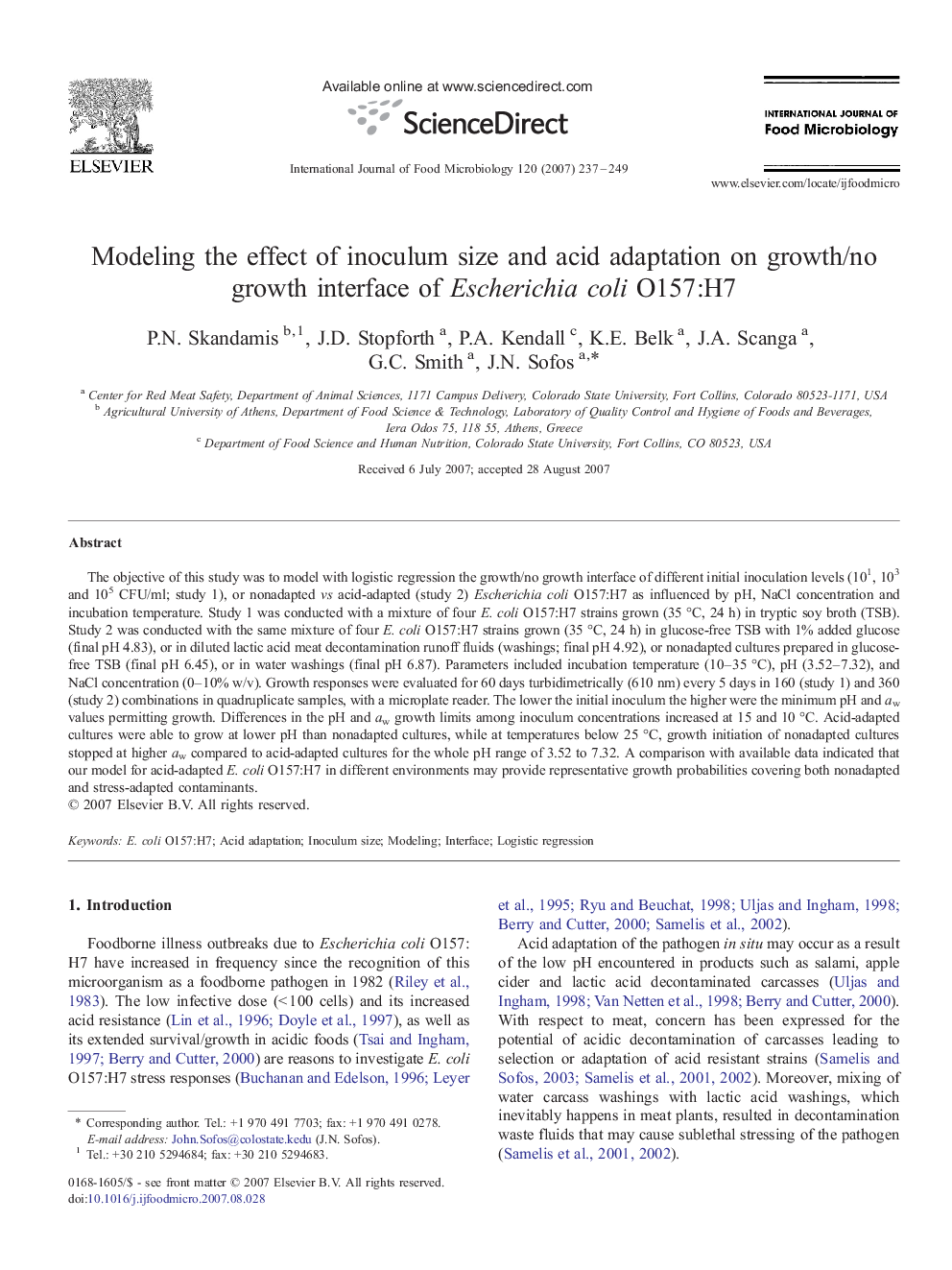| Article ID | Journal | Published Year | Pages | File Type |
|---|---|---|---|---|
| 4369601 | International Journal of Food Microbiology | 2007 | 13 Pages |
The objective of this study was to model with logistic regression the growth/no growth interface of different initial inoculation levels (101, 103 and 105 CFU/ml; study 1), or nonadapted vs acid-adapted (study 2) Escherichia coli O157:H7 as influenced by pH, NaCl concentration and incubation temperature. Study 1 was conducted with a mixture of four E. coli O157:H7 strains grown (35 °C, 24 h) in tryptic soy broth (TSB). Study 2 was conducted with the same mixture of four E. coli O157:H7 strains grown (35 °C, 24 h) in glucose-free TSB with 1% added glucose (final pH 4.83), or in diluted lactic acid meat decontamination runoff fluids (washings; final pH 4.92), or nonadapted cultures prepared in glucose-free TSB (final pH 6.45), or in water washings (final pH 6.87). Parameters included incubation temperature (10–35 °C), pH (3.52–7.32), and NaCl concentration (0–10% w/v). Growth responses were evaluated for 60 days turbidimetrically (610 nm) every 5 days in 160 (study 1) and 360 (study 2) combinations in quadruplicate samples, with a microplate reader. The lower the initial inoculum the higher were the minimum pH and aw values permitting growth. Differences in the pH and aw growth limits among inoculum concentrations increased at 15 and 10 °C. Acid-adapted cultures were able to grow at lower pH than nonadapted cultures, while at temperatures below 25 °C, growth initiation of nonadapted cultures stopped at higher aw compared to acid-adapted cultures for the whole pH range of 3.52 to 7.32. A comparison with available data indicated that our model for acid-adapted E. coli O157:H7 in different environments may provide representative growth probabilities covering both nonadapted and stress-adapted contaminants.
